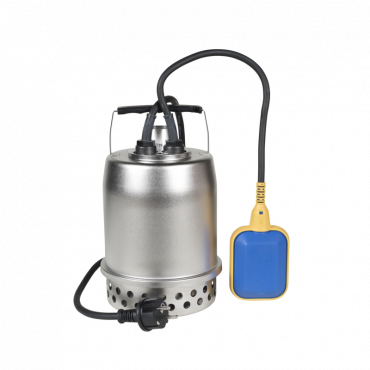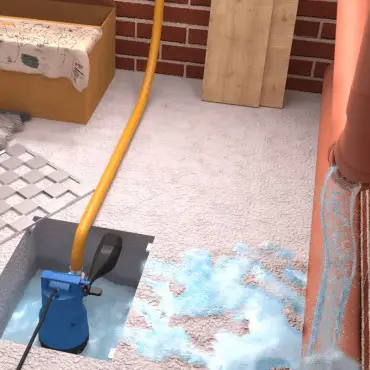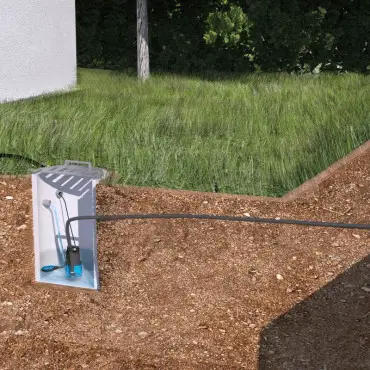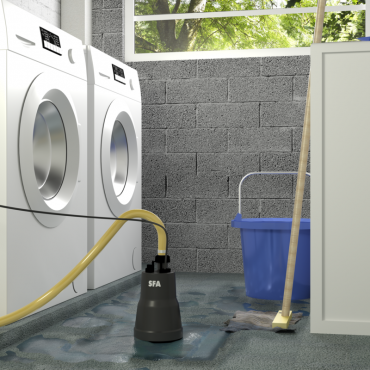- Menu
-
Your needs
If you want to install a new bathroom, an additional toilet, a laundry room, connect the condensate drain, all without major works, SFA has the solution that meets your needs. Without much work you can simply drain all the water away.
-
Our products
For a boiler, an air conditioner, a shower, a toilet, a kitchen, a laundry room, a refrigerated display case, a house or a complete building, SFA has been the specialist in the removal of all types of water since 1958, whether you are a private individual or a professional, we have the solution that meets your needs.
-
SFA group
The historical inventor of the SANIBROYEUR® has forged its expertise over time. Discover the history and values of the SFA Group.
- Blog
- Contact
-
Professionals
- Download Hub
Installing a cellar pump
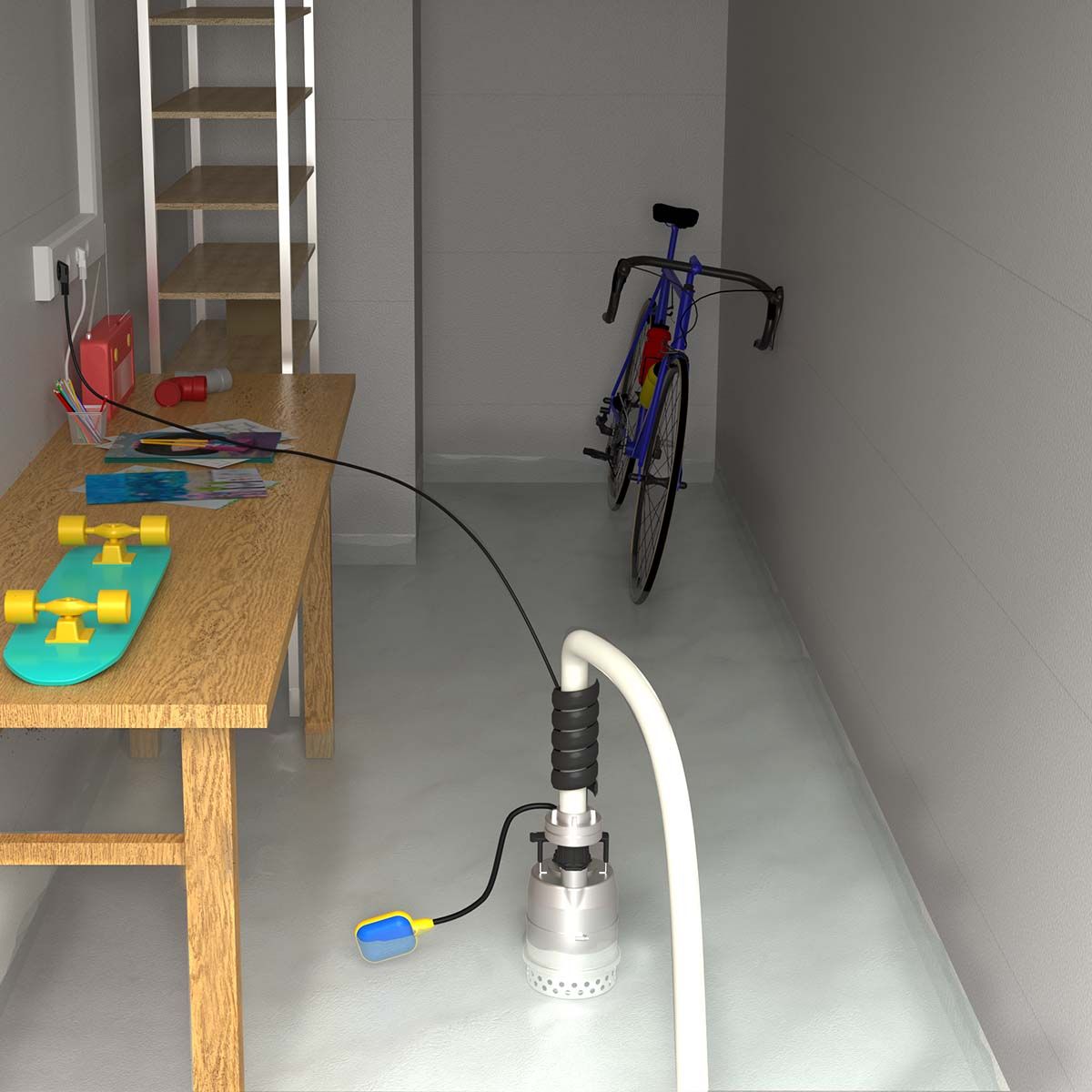
A cellar pump is a pumping station that serves a specific purpose. This piece of equipment is mainly used to empty an enclosed space in the event of flooding. It is for this reason that this type of pump is often called a "mop pump". Most of these pump models are small and easy to handle, due to having an ergonomic carrying handle. They are usually made of stainless steel and are designed to withstand being submersed for a long time. Note that, for safety reasons, the pump wiring is fully sealed.
Contact Us

An overview of the cellar pump
The submersible pump for wastewater disposal consists of different components. The main structuring element is the engine, then the turbine, the floater, the connector, and the several-input base. The latter is the receptacle on which the submersible pump rests. The upper opening is more or less wide depending on the models and the nature of the water to be pumped, whether clear or dirty. The pump is meant to retain large particles and prevent damage to the device. Ultimately, once submerged, this equipment can be activated either automatically or manually to suck up water until delivery height is reached.
Cellar pumps are, by definition, intended to empty, flooded, closed rooms, but not solely. Here are their various uses:
Clearing flooding
Following harsh weather or domestic water damage, your cellar, garage, or basement can fill up with water. Once immersed, the pump allows you to empty the room and release the water outside.
Emptying a pool
It is possible to use a vacuum pump to remove water from a pool or spa. If you are buying a submersible pump for this specific purpose, check on its throughput capability. It should be proportional to the time required to carry out the emptying. Additionally, the pressure delivered by this type of device is comparable to that of a garden hose.
Drying up a soaked surface
This is when the name "mop pump" makes total sense. Following heavy storms, a car park or the roof of a building can gorge with water. A cellar pump is then the ideal tool for drying them up.
Here, you should take note that the vacuum pump is inappropriate for evacuating particularly dirt-laden wastewater, that is, containing sand or solid particles. It is rainwater or household water that is, in most occurrences, pumped with the help of this specific pump. Therefore, its use is merely occasional in case of flooded premises or the emptying of a spa, basin, swimming pool, sump, or septic tank.
How to choose your cellar pump?
To select the model of cellar pump that best suits you, consider the following parameters: the location of the device, the nature of the water to be pumped, and the delivery height.
The location of the vacuum pump
Picking a cellar pump depends, first of all, on where you want the device set up. It can be set in cisterns, such as a sump or tank. In this case, choose a small model with a compatible diameter to dip it in entirely. When the tank is too narrow, the solution is then to opt for a pump without an external floater. An alternative location for a vacuum pump is the basement. To optimize the drying, check whether the bearing surface is either flat or low-leveled.
The type of wastewater to drain
The second element to take into account is the nature of the water to be vacuumed. In any case, whichever model it is, a cellar pump is not intended to vacuum solids-containing wastewater. This type of pump is used to drain clear water, wastewater, or dirt-laden water. That said, there are differences in granulometry from one device to the next. When particle diameter ranges from ⩽5 mm, you are dealing with a clean-water pump. Some water carries particles of a diameter between 6 to 20 mm; when lightly dirt-laden, you then should opt for a wastewater pump. Finally, a 20 mm granulometry device is what you need to drain heavily-laden wastewater.
The delivery height
The last criterion to consider before picking your cellar pump is the delivery height or the wading depth. Here is a quick explanation to fully understand how the device works. To install a pump in a water-filled space, you must connect it to an elevated electrical outlet. Then, gently tie the pump to a rope and lower it until completely immersed. The submersible pump, which comes equipped with a floater, will automatically detect the presence of water and turn itself on to start pumping vertically. It is, therefore, necessary that there be enough depth for the drying to take place. Note that whenever the water level is too low for the device to detect, you will need to switch it on manually.
SFA's cellar pumps
For decades since 1958, SFA's been gaining expertise in home and business premise sanitary comfort solutions. SFA's range of Sanisub pumping stations for the emptying of premises or basins is at the forefront of innovation.
Efficient and easy to use, it is designed to meet all needs and demands. Choose what suits you from the following models:
◾ The Sanipuddle "mop pump", for drying up wet surfaces;
◾ The Sanisub Steel flood pump, in case of an emergency;
◾ The submersible Sanisub ZPK pump, which is made of stainless steel;
◾ The Sanisub S ZPK pump, for corrosive water;
◾ The Sanisub 400 submersible pump, for cellars or sumps.
To help you distinguish between our various cellar pumps, here is a more detailed overview :
The Sanipuddle "mop pump": for close-to-total water drainage
Called a "mop pump", the Sanipuddle only leaves a one-millimeter puddle of water behind, which is easily swept with a mop: a true clear-water vacuum cleaner (1 mm granulometry). Operational right out of the box, the submersible Sanipuddle pump has a throughput capability of 18 ft3/hour. It is portable (only 2.2 pounds) and comes equipped with a 32-foot power cable with an electrical plug for an extended range of action. The Sanipuddle is also equipped with a non-return valve and a DN25-output hose connection. The Sanipuddle pump is also straightforward and perfectly suited for emergency drainage. Thanks to its 3-foot delivery height, it can empty most cellars, laundries, swimming pools, and garages.
The ready-to-use Sanisub steel pump kit to react to an emergency
SFA designed the Sanisub Steel emergency kit: a complete, portable, and ready-to-use kit that encompasses everything. The pump, made of stainless steel, comes in a basket with 8x8 perforations that protect it from floating foreign matter. Due to its molded hooks, this basket simplifies storage and ensures the perfect stability of the pump when used. It can also be easily taken off the basket and used out of it. In addition, the quick coupling associated with the drainage hose (49 feet long) adapts to all configurations, and the adjustable floater turns it on automatically. Also, a cannula prevents twisting, thus preventing any squeezing of the hose. Finally, the power cable with an electrical plug is 32 feet long.
Light and robust, the Sanisub Steel 50A pump that comes with the kit can drain wastewater (10 mm grain size) at a throughput speed of 29 ft3 per hour with a delivery height of up to 22 feet. Weighing 28 pounds and displaying an IP 68 protection index, the Sanisub Steel emergency kit has optimal engine cooling and stands water at temperatures of up to 167 °F for a short period. It is intended for domestic, industrial, or agricultural use (cellar, garage, rainwater tank pumping).
The versatile and ultra-resistant Sanisub ZPK pump
Submersible and portable, the Sanisub ZPK pump is both lightweight and ultra-resistant to shocks and corrosion thanks to its high-quality polypropylene structure. Available in 2 models (30A and 40A) - respectively 300 W and 850 W - the Sanisub ZPK provides pumping up to 24 or 32 feet high and an auto-start feature thanks to its floater (standard).
Reliable and safe as well, as Sanisub ZPK is doubly equipped with a mechanical seal and joint. This device withstands clear and gray water, with a granulometry of 10 mm for the ZPK 30 A and 30 mm for the ZPK 40A, and stands temperatures up to 194°F over a short period. This solution that SFA has got in store for you is ideal for most emergency clear water drainage. It helps with flooding issues in cellars, garages, and rainwater tanks. It is also used for pumping domestic gray water (without human fecal matter) such as showers, washing machines, sinks, etc.
Also, check out the Sanisub ZPK 40 AV: it incorporates the performance of the Sanisub ZPK 40 A in a more compact format thanks to its vertical floater. You can therefore set it up in a 30 cm by 30 cm tank.
The Sanisub S ZPK pump for extreme situations
SFA has worked on a version of the Sanisub ZPK pump that is suitable for pumping salt-laden water (with a maximum salt content of 15%) or corrosive water from water softening systems, for example, or condensate-containing water. Thus the Sanisub S ZPK sewage pump was born. It is portable and equipped with a mechanical seal made of high-quality silicon carbide, a casing, and a crankcase in stainless steel too. You should also note that the Sanisub S ZPK and its two 30A and 40A versions (10 and 14 pounds) can drain brine water. It is a pump for softened corrosive and saline water (salt content of max. 15%). It has got a floater that turns the device on automatically.
The Sanisub 400 pump: the "plug-and-play" device for greater water depths
Fitted with a non-return valve and a cooling shroud, the polyethylene Sanisub 400 pump has an immersion capacity of up to 24 feet to drain water with a grain size of up to 10 mm. It is compact, portable, and light (9 pounds) and is intended for the draining of cellars, sumps, wells, and living rooms. As soon as it is plugged in (32-foot connection cable with plug), it starts up on its own and switches off automatically due to its integrated trigger arm.

